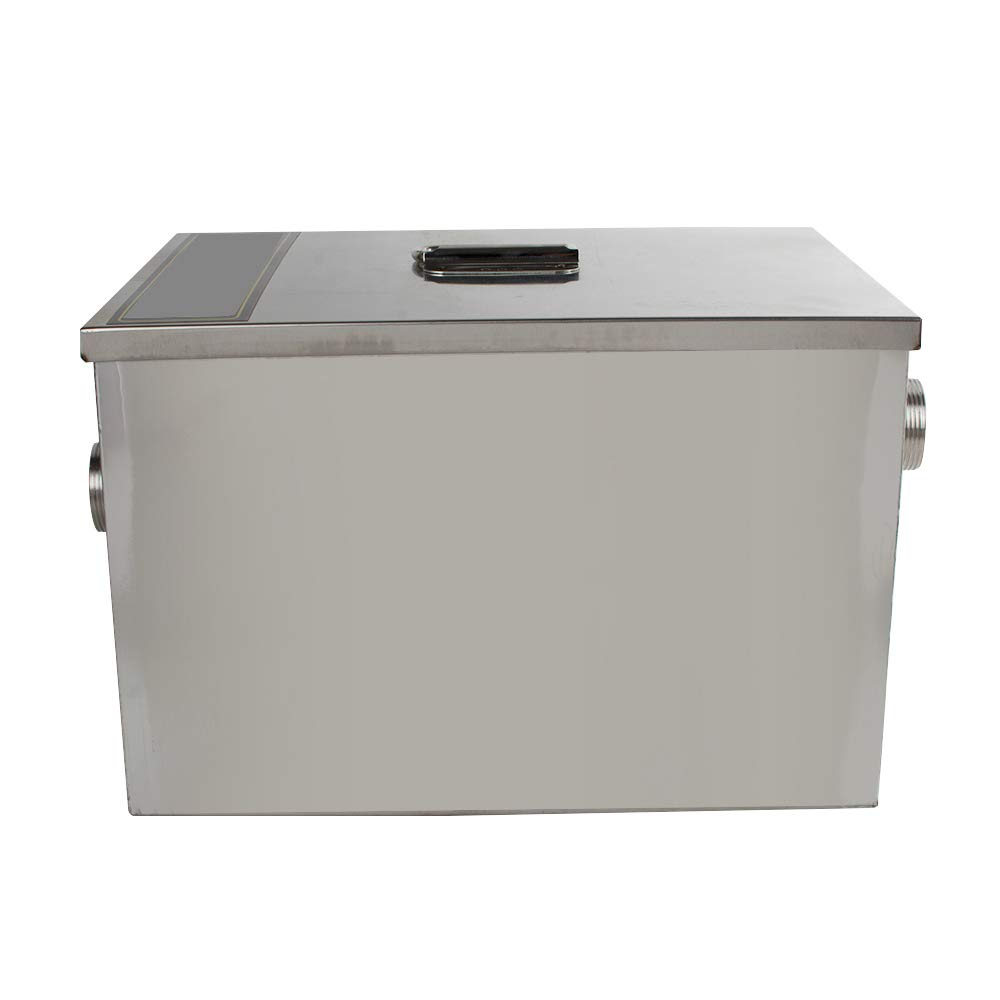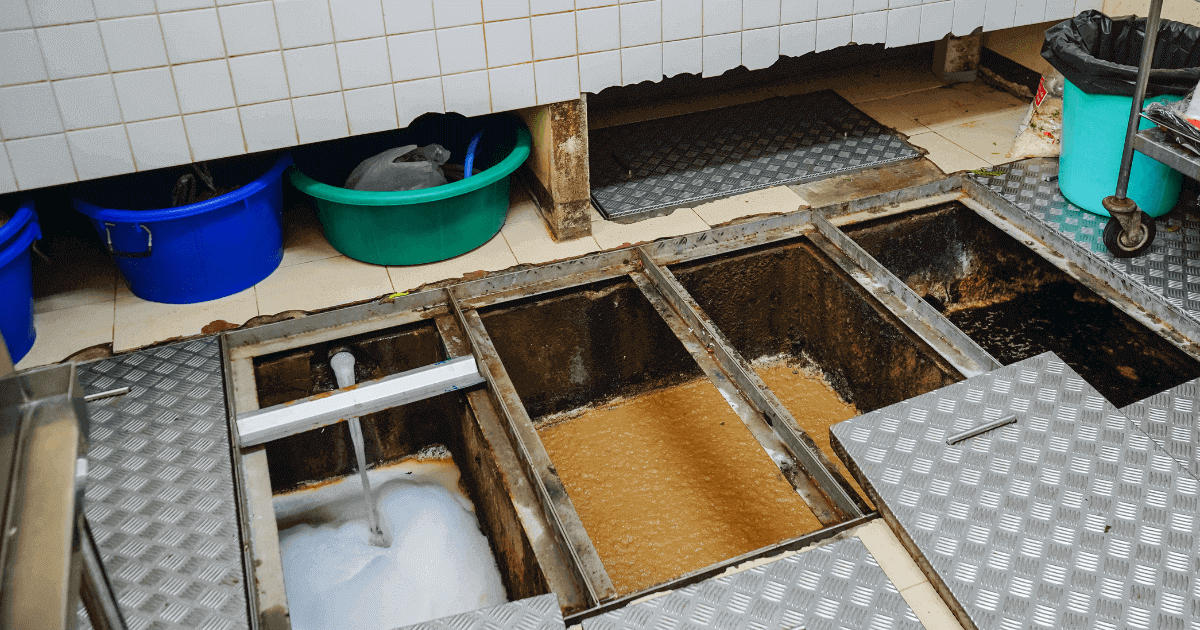If you own or manage a restaurant, cafeteria, commercial kitchen, or any food establishment in the Philippines, you probably know how important it is to maintain a clean and sanitary kitchen. One of the most common sources of kitchen waste is cooking oil and grease, which can accumulate in your pipes and cause clogs, backups, and foul odors. To prevent these problems and comply with local codes and regulations, you need to install a grease trap.
What is a grease trap?
For those who are not familiar since this is not typically present in a common Philippine household, a grease trap is a box-shaped device that is typically located underground, although some smaller models may be installed above ground. The size and shape of the grease trap will vary depending on the type of establishment and the amount of FOG (fats, oils, and grease) produced. In general, larger establishments require larger grease traps.
Here are some kinds of grease traps depending on the establishment or kitchen requirements.
1. Gravity grease trap
This is the most basic and common type of grease trap, and it relies on gravity to separate the FOG from the wastewater. It works by slowing down the flow of wastewater, allowing the FOG to rise to the surface, and then trapping it in a separate compartment. The separated wastewater then flows out of the trap and into the sewer line or septic tank.

2. Automatic grease trap
This type of grease trap work by using sensors or timers to control the inflow and outflow of wastewater, reducing the amount of FOG that enters the sewer line or septic tank. These automatic grease removal units can also monitor the grease level and alert the user when it needs to be emptied.
3. Hydromechanical grease trap
This type of grease trap installed uses a combination of gravity and mechanical action to separate the FOG from the wastewater. It has a rotating drum or basket that scrapes and traps the FOG, allowing the wastewater to flow out of the trap. Hydromechanical grease traps are more efficient than gravity grease traps, but they require more maintenance.

4. In-ground grease interceptor
Grease interceptor is installed underground, can handle large volumes of wastewater and can service larger facilities. It works by using a series of baffles and chambers to separate the FOG from the wastewater. In-ground grease interceptors are more expensive and require more space than other types of grease traps, but they are more efficient and durable.
It is important to choose the appropriate type of grease trap based on the specific needs and requirements of your commercial kitchens or establishments. A professional installer can help you select the most suitable type and size of grease trap for your business.

How does a grease trap work?
A Grease trap works by utilizing the principle of gravity to separate FOG (fats, oils, and grease) from water. As wastewater enters the grease trap, it passes through the first compartment, where the FOG begins to separate from the water. The FOG rises to the top and solidifies, while the water sinks to the bottom and passes through the baffle walls into the subsequent compartments.
The baffle walls slow down the flow of water, allowing more time for the FOG to separate and solidify. The final compartment contains a drain that allows the treated water to exit the grease trap and enter the plumbing system.
To maintain the effectiveness of a grease trap, it must be properly maintained and cleaned. This involves removing the solidified FOG from the first compartment and disposing of it properly. Failure to properly maintain a grease trap can lead to blockages and backups in the plumbing system, as well as potential health and safety hazards.

Grease trap for kitchen, how effective are they?
Studies have shown that properly installed and maintained grease traps can reduce FOG in wastewater by up to 90%. This reduction in FOG helps to prevent blockages and backups in the plumbing and drainage systems, as well as reducing the risk of health and safety hazards.
In addition to preventing blockages and backups, grease traps can also help to reduce the amount of FOG that enters the environment. When FOG enters the environment, it can cause pollution and harm wildlife. By reducing the amount of FOG that enters the environment, grease traps can help to protect the environment and preserve natural resources.
It is important to note that while grease traps are highly effective, they are not a substitute for proper cleaning and maintenance practices. Grease traps must be regularly cleaned and maintained to ensure their effectiveness, and failure to do so can result in blockages, backups, and potential health and safety hazards.

Understanding Local Codes and Regulations about grease trap installation
Before you install a grease trap, you need to know the relevant local codes and regulations in the Philippines. The main law that governs water quality in the country is the Clean Water Act (RA 9275), which requires all businesses that discharge wastewater to the environment to obtain a wastewater discharge permit from the Department of Environment and Natural Resources (DENR). The permit specifies the allowable levels of pollutants, including oil and grease, that your business can discharge to the sewer or septic tank.
To comply with the Clean Water Act and other regulations, you need to install a grease trap that meets the specific requirements of your local government unit (LGU) or water district. The Philippine Plumbing Code (PPC) also provides guidelines for the design, construction, and maintenance of grease traps, including the minimum size, location, and capacity based on the flow rate and the type of food establishment.
In the Philippines, the specific requirements for commercial grease traps installation are outlined in the Philippine Plumbing Code (PPC) and in the regulations of the local government unit (LGU) or water district where your business is located. These requirements include its size, location, and maintenance.
Size:
The size of the grease trap depends on the flow rate and the type of food establishment. The PPC specifies the minimum size of the grease trap in relation to the flow rate of the wastewater. For example, a food establishment that generates up to 1,000 liters of wastewater per day must have a grease trap with a minimum capacity of 0.34 cubic meters (9.5 cubic feet). The capacity increases as the flow rate increases.
Location
The location of the grease trap should be accessible for cleaning and maintenance, but should not pose a hazard to public health or the environment. The PPC requires that the grease trap should be located outside the building, near the kitchen, and downstream of all fixtures that discharge grease-laden wastewater. It should also be installed on a concrete foundation with a minimum thickness of 100 mm (4 inches) and should have a vent to prevent airlock.
Maintenance
To ensure the optimal performance of the grease trap, it should be maintained regularly. The PPC recommends that the grease trap should be cleaned and emptied when the grease layer reaches 25% of the trap depth or at least once every three months, whichever comes first. The collected grease and oil should be disposed of properly, according to the regulations of the LGU or DENR. A logbook should also be kept to record the date of cleaning and the amount of grease and oil removed.
It is important to note that failure to comply with the requirements for grease trap installation and maintenance can result in penalties and fines from the LGU or DENR. Moreover, not having a grease trap or having a poorly maintained one can lead to clogs, backups, and environmental pollution, which can harm your business and the community. Therefore, it is crucial to consult with a professional installer and to comply with the local codes and regulations for grease trap installation and maintenance in the Philippines.

How is a grease trap installed?
Here are the general steps on how grease traps are installed:
- Site preparation
The installation site should be identified, and the area should be cleared of any obstruction. The site should be accessible for maintenance and should comply with local codes and regulations.
- Grease trap sizing and selection
The grease trap size and type should be determined based on the flow rate and the type of food establishment. A professional installer can help in selecting the appropriate grease trap model and size.
- Excavation and foundation
The site is excavated to the appropriate depth, and a concrete foundation is laid to support the grease trap. The foundation should be level, stable, and capable of supporting the weight of the grease trap.
- Plumbing connections
The plumbing system is connected to the inlet and outlet of the grease trap. The inlet should be connected to the kitchen fixtures that discharge grease-laden wastewater, while the outlet should be connected to the sewer line or septic tank.
- Installation
The grease trap is lowered into the excavation and placed on the concrete foundation. The trap should be level, aligned, and secured to prevent movement or leakage.
- Venting and testing
The grease trap should be vented to prevent airlock and pressure buildup. The plumbing system is tested for leaks and proper flow.
- Commissioning and maintenance
The grease trap is commissioned by filling it with water and adding a measured amount of vegetable oil. The trap should be inspected regularly and maintained according to local codes and regulations.
In summary, installing a grease trap involves site preparation, sizing and selection, excavation and foundation, plumbing connections, installation, venting and testing, and commissioning and maintenance. It is recommended to hire a professional installer who is familiar with local codes and regulations to ensure a successful and compliant installation.
Consider professional grease trap services with Happy Housekeepers.
We offer a variety of other services in addition to grease trap cleaning. We can also clean your commercial kitchen and make sure it is free of any bacteria or viruses that could be present. In addition to that, we can also take care of any plumbing issues you may have in your restaurant or home. Our expertly trained technicians are ready and eager to help you with all your needs.

